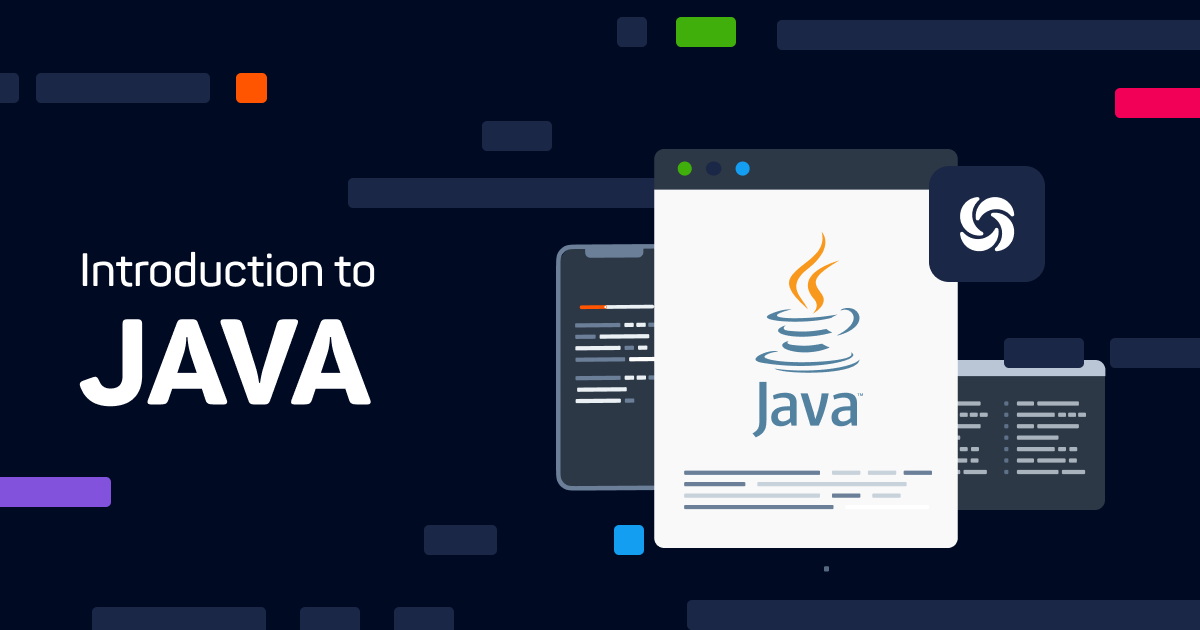Interviewer: Good morning/afternoon [Candidate’s Name]. Thank you for taking the time to interview with us. Before we start, could you please tell us a bit about your experience?
Candidate: [Candidate’s response, typically covering their experience, skills, and reasons for interest]
Interviewer: That’s great. Let’s start with some technical questions: Please Rate yourself on a Scale of 1 to 10 for your top skills
Java Questions and Answers
1. What are the differences between equals() and hashCode() methods?
equals(): It is a method used to compare the equality of two objects in Java. By default, it checks for reference equalityhashCode(): It is a method that returns a hash code value for an object. ThehashCode()method is used in hash-based data structures likeHashMapandHashSetto determine the object’s bucket or location.
2. What is the difference between method overloading and method overriding?
Method Overloading:
- It involves having multiple methods in a class with the same name but different parameters.
- The methods are differentiated based on the number, type, or order of parameters.
- Method overloading is determined at compile-time (static polymorphism).
- Overloaded methods can have different return types.
Method Overriding:
- It involves creating a method in the subclass with the same name and parameters as in the superclass.
- The method in the subclass provides a different implementation of the method defined in the superclass.
- Method overriding is determined at runtime (dynamic polymorphism).
- Overridden methods must have the same return type or a covariant (subclass) return type.
3. What are the differences between checked and unchecked exceptions in Java?
Checked exceptions are checked at compile-time and must be declared in a method’s signature or caught using a try-catch block. Examples include IOException and SQLException. Unchecked exceptions, also known as runtime exceptions, are not checked at compile-time and do not need to be declared or caught explicitly. Examples include NullPointerException and ArrayIndexOutOfBoundsException.
4. What is the difference between serialization and externalization in Java?
Serialization is the process of converting an object’s state into a byte stream, which can be stored in a file or transmitted over the network. Externalization is a variation of serialization that allows you to have more control over the serialization process by implementing custom readExternal() and writeExternal() methods.
5. What are functional interfaces in Java 8?
Functional interfaces are interfaces that have exactly one abstract method. They are used to define lambda expressions and method references in Java 8’s functional programming paradigm. Examples include Runnable, Consumer, and Predicate.
6. What are lambda expressions in Java 8?
Lambda expressions are anonymous functions introduced in Java 8. They allow you to write concise and expressive code by providing a way to pass behavior as a parameter to methods or functions. Lambda expressions are commonly used with functional interfaces and the Stream API.
7. What is the difference between the default and static methods in interfaces?
Default methods were introduced in Java 8 to allow adding new methods to existing interfaces without breaking the implementations. They have a default implementation in the interface itself. Static methods in interfaces are similar to static methods in classes and can be called directly using the interface name.
8. What is the difference between ArrayList and LinkedList?
ArrayList is implemented as a resizable array, while LinkedList is implemented as a doubly-linked list. ArrayList provides faster access to elements by index, while LinkedList provides faster insertions and deletions.
9. What is the purpose of the Comparable and Comparator interfaces?
The Comparable interface is used to define the natural ordering of objects. The Comparator interface is used to define custom ordering for objects.
10. What is the difference between fail-fast and fail-safe iterators?
Fail-fast iterators throw a ConcurrentModificationException if the collection is modified while iterating. Fail-safe iterators work on a copy of the original collection and do not throw an exception.
Microservices Questions
1. What are the main advantages of using microservices architecture?
Microservices architecture provides benefits such as improved scalability, fault isolation, independent deployment, technology diversity, and better team autonomy.
2. How do microservices communicate with each other?
Microservices typically communicate through lightweight protocols such as HTTP/REST or messaging systems like RabbitMQ or Apache Kafka. API gateways and service registries can also be used for service discovery and communication.
3. What is service discovery and why is it important in microservices?
Service discovery is the process of dynamically locating and registering services within a microservices architecture. It enables automatic service registration, health checks, load balancing, and allows services to find and communicate with each other without hard-coded dependencies.
RESTful Web Service with Spring Boot Questions and Short Answers
1. What is a RESTful web service?
A RESTful web service is an implementation of the REST architecture that allows clients to interact with resources over the web using HTTP methods like GET, POST, PUT, and DELETE. It follows the principles of statelessness, uniform resource identification, and representation.
2. How can you create a RESTful web service in Spring Boot?
In Spring Boot, you can create a RESTful web service by annotating a class with @RestController and defining methods that handle HTTP requests using annotations like @GetMapping, @PostMapping, etc. Spring Boot automatically handles the serialization/deserialization of objects to/from JSON/XML.
3. What is the purpose of the @RestController annotation?
The @RestController annotation is used to annotate a class in Spring Boot that will handle incoming HTTP requests and generate HTTP responses. It combines the @Controller and @ResponseBody annotations, making it convenient for building RESTful web services.
4. How can you pass data in the URL path in a RESTful web service?
You can pass data in the URL path of a RESTful web service by using path variables. Annotate a method parameter with @PathVariable and provide the corresponding variable name in the URL mapping. Spring Boot will bind the value from the URL to the parameter.
5. How can you pass data in the request body in a RESTful web service?
To pass data in the request body of a RESTful web service, use the @RequestBody annotation on a method parameter. Spring Boot automatically deserializes the request body content (e.g., JSON) into the specified parameter type.
6. How can you handle query parameters in a RESTful web service?
To handle query parameters in a RESTful web service, annotate a method parameter with @RequestParam. The value of the query parameter will be automatically bound to the annotated parameter.
7. How can you handle HTTP DELETE requests in a RESTful web service?
To handle HTTP DELETE requests in a RESTful web service, use the @DeleteMapping annotation. It maps the specified URL to the annotated method, allowing you to process incoming DELETE requests.
8. What is the purpose of the @ExceptionHandler annotation?
The @ExceptionHandler annotation is used to define methods that handle specific exceptions in a Spring Boot RESTful web service. When an exception occurs, the corresponding @ExceptionHandler method is invoked to handle the exception.
PostgreSQL Questions
Explain the difference between a table and a view in PostgreSQL.
- Answer: A table stores data physically, while a view is a virtual table created by a query joining one or more tables.
What are indexes and why are they used in PostgreSQL?
- Answer: Indexes are special lookup tables that the database search engine uses to speed up data retrieval.
How do you handle transactions in PostgreSQL?
- Answer: Using the commands
BEGIN,COMMIT, andROLLBACKto control the transaction flow.
- Answer: Using the commands
What is the difference between
INNER JOINandOUTER JOINin PostgreSQL?- Answer:
INNER JOINreturns only the matching rows from both tables, whileOUTER JOINreturns all rows from one table and the matching rows from the other table, plus nulls where there is no match.
- Answer:
Explain the use of
TRIGGERin PostgreSQL.- Answer: A
TRIGGERis a function that is automatically invoked by PostgreSQL in response to certain events on a particular table or view.
- Answer: A
Design Patterns - Short Descriptions
1. Singleton
- Ensures a class has only one instance and provides a global point of access to it.
2. Factory Method
- Defines an interface for creating objects, but allows subclasses to decide which class to instantiate.
3. Abstract Factory
- Provides an interface for creating families of related or dependent objects without specifying their concrete classes.
4. Builder
- Separates the construction of complex objects from their representation, allowing the same construction process to create different representations.
5. Prototype
- Creates new objects by cloning existing ones, allowing the copying of object properties and behaviors.
6. Adapter
- Allows incompatible classes to work together by converting the interface of one class into another expected by the clients.
7. Decorator
- Dynamically adds behavior to an object at runtime by wrapping it in a decorator class.
8. Composite
- Represents a group of objects as a single object, treating both in a uniform manner.
9. Proxy
- Provides a surrogate or placeholder for another object to control its access, add extra functionality, or perform lazy initialization.
10. Observer
- Defines a one-to-many dependency between objects, so that when one object changes its state, all its dependents are notified and updated automatically.
11. Strategy
- Defines a family of algorithms, encapsulates each one, and makes them interchangeable at runtime.
12. Template Method
- Defines the skeleton of an algorithm in a superclass, allowing subclasses to provide specific implementations of certain steps.
13. State
- Allows an object to alter its behavior when its internal state changes, treating each state as an individual class.
14. Facade
- Provides a simplified interface to a complex system, hiding its complexities and improving usability.
15. Command
- Encapsulates a request as an object, allowing parameterization of clients with different requests, queue or log requests, and support undoable operations.



Comments